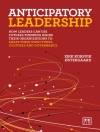The concept of strategic human resource management has developed widely in the last couple of years, especially because of the impact of human resources on the competitiveness of organizations. The development of human resource strategies involves taking into account their multiple mutual dependencies and the fact that they must be vertically integrated with the business strategy. These strategies define the intentions and plans related to the overall organizational considerations, such as organizational competitiveness, effectiveness or image, and to more specific aspects of human resources management, such as resourcing, motivating, valuating, learning and development, reward and employee relations.
Strategic management of human resources provides a large perspective on the way critical issues or success factors related to people can be addressed and how different concepts of strategic decisions are made, with long-term impacts on the behavior and success of the organization. The fundamental objective of human resource strategic management is to generate strategic capabilities by ensuring that the organization has the high-qualified, committed and well-motivated employees it needs to achieve and sustain the competitive advantage.
The emergence of strategic human resource management (SHRM) is influenced by global competition and the corresponding search for sources of a sustainable competitive advantage. SHRM has achieved its prominence because it provides a means by which business firms can enhance the competitiveness and promote managerial efficiency. It facilitates the development of human capital that meets the requirements of a competitive business strategy, so that organizational goals and the mission of the organization will be achieved.
The HRM system is defined as ‘a set of distinct but interrelated activities, functions and processes that are directed at attracting, developing, and maintaining (or disposing of) a firm’s human resources.’ Many agree that HRM is the most effective tool which contributes to the creation of human capital, and in turn, contributes to organizational performance and the competitive advantage.
This book puts emphasis on understanding the role of HRM between organizations and people and provides an analytical approach toward encompassing HRM, employment relations, and organizational behavior. As a management discipline, HRM draws insights, models and theories from cognate disciplines and applies them to real-world settings. Further, this book discusses how current theoretical perspectives and frameworks (e.g., those related to strategic competitiveness, knowledge management, learning organization, communities of practice, etc.) can be applied by reflective practitioners to create an eco-friendly organizational culture.












